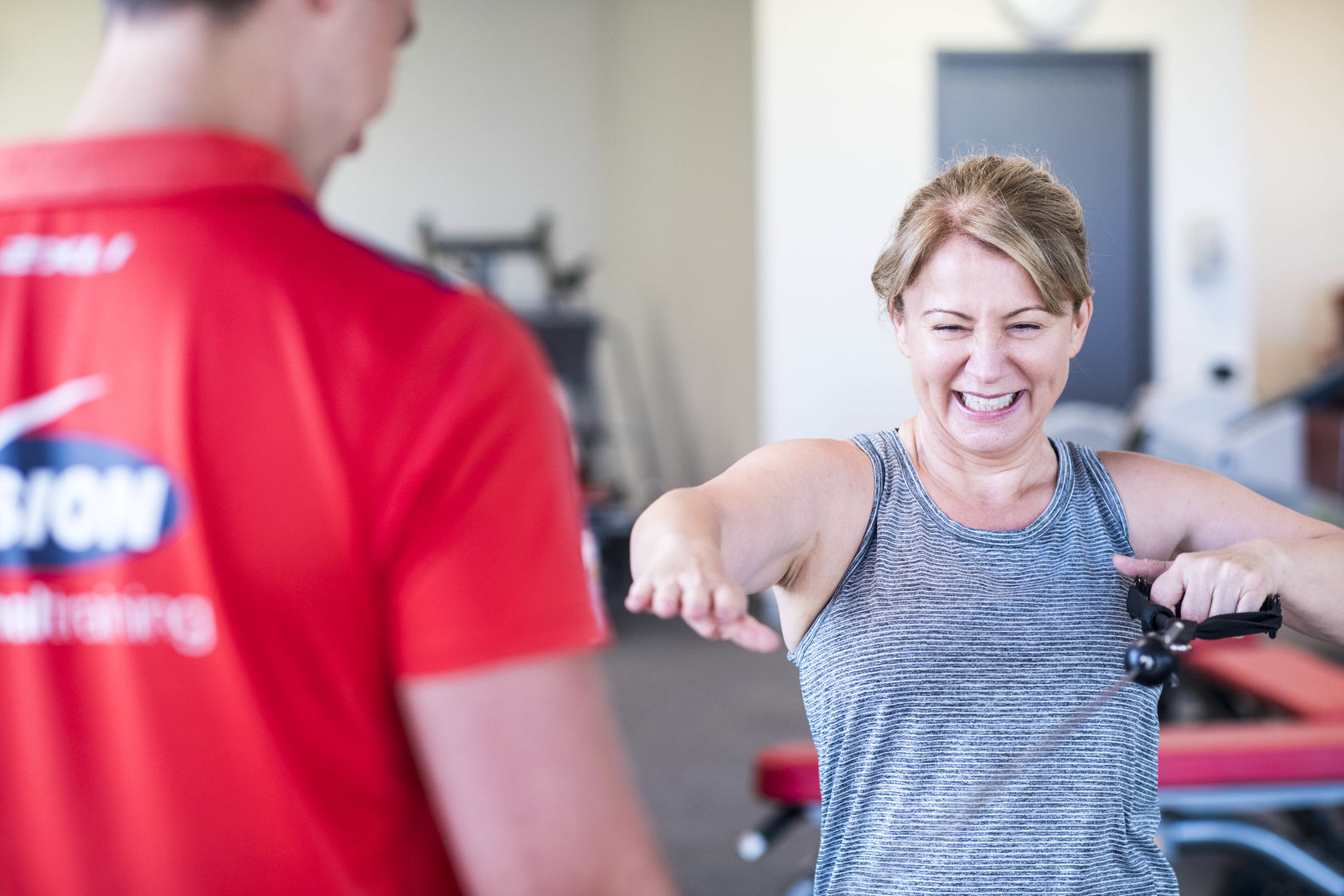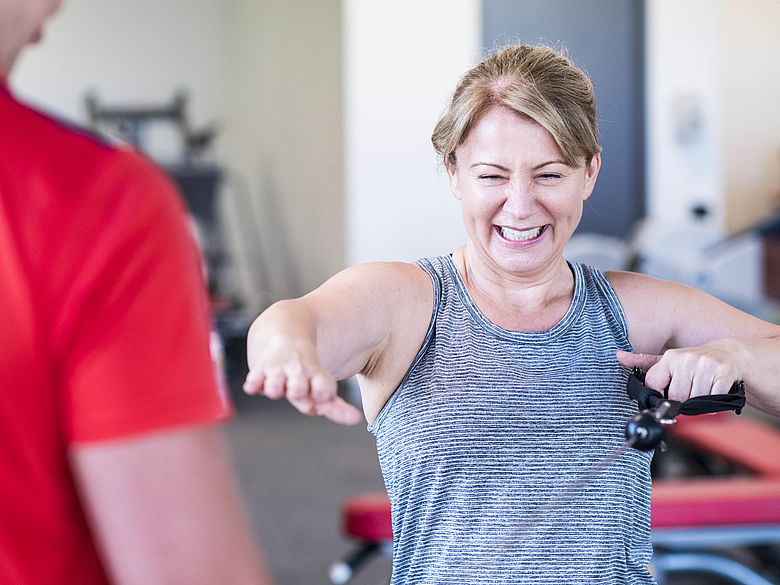From working with many clients seeking to burn fat or build muscle one vital skill for progression is learning how to listen to your body to avoid injury
Raising the intensity of your exercise sessions to help achieve results can be fantastic, however you must take ownership of the condition of your body to decrease risk of injury.
In strength training, there is a learned skill known as the mind -muscle connection, which is a neural communication between the brain and the muscle fibres. It is a deliberate and conscious muscular contraction. It refers to the activation of the muscle and NOT just moving the weight. The skill being developed here is awareness of your own body. You can enhance this connection with tempo weight training and isometric contractions like slow eccentrics (lowering phase or moving away from the body) and learning how to flex the target muscle effectively (holding the muscle in its shortest position for 4-5 seconds). It requires a conscious effort to activate the target muscle, while actively visualizing the desired movement of each muscle.
For beginners practicing this my advice would be to start off with 3 second eccentric phases to all your weight sessions for a period of 4-6 weeks. The goal is to improve both musculoskeletal and neurological components of resistance training. If unsure hire a coach to show you the correct methods.
For muscle building this awareness is necessary to be successful. This same awareness can be used in assessing injury also. It is just a deeper understanding and connection to your own body and its functions.
It is important to understand it is completely natural to feel some soreness after some exercise sessions but through experience, and openly communicating with your trainer if you have one, you can assess the soreness you feel and determine the right action to take.
After every training session you complete, be mindful to stretch and focus on lengthening the stressed muscles you used in the workout. Stretch for around 10 to 15 minutes post workout to avoid the tightening of the muscles and therefore to reduce the risk of injury.
If you have completed a high-intensity workout, often the best remedy to recover is a light session the following day. This can greatly assist in the removal of lactic acid from the body and often this lactic acid is one of the main contributors to muscle soreness or fatigue. If the pain is still with you after two to three days, seek some expert advice.
Another great tip for recovery and helping avoid injury is to use Epsom salts in a bath either after the workout or the following morning. The salts will assist in relaxing the stressed muscles. This is also a great tip to use for working on flexibility by having a warm bath then planning a 10-minute stretch session straight after.
Something to consider when discussing mind/body connection and overall body awareness is to practice some meditation or just some time in silence. Any minor injuries will be easily identified and you can locate the source of the pain.
As with all injuries, always communicate clearly to your trainer or a fitness professional before commencing your training session and if ever uncertain seek the advice of an experienced osteopath, physiotherapist or equivalent.
To book a FREE training session contact me jclare@visionpt.com.au
Vision Personal Training Mona Vale
James Clare BSc Nutrition
*Disclaimer: Individual results vary based on agreed goals. Click here for details.

